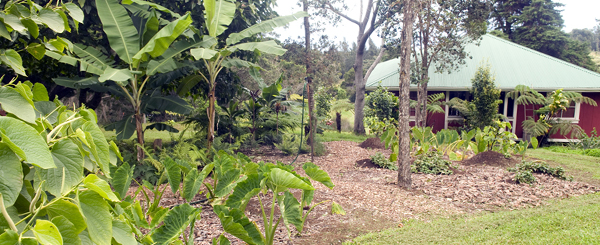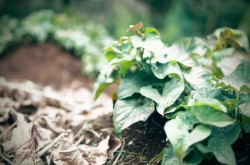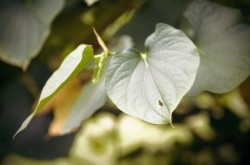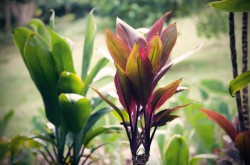The early Polynesians were at home on the ocean, and traveled in sailing canoes thousands of miles to Hawai’i, navigating by the stars. They lived at sea much the same way they lived on the land, conserving their resources. Plants brought by canoes were carefully selected to provide food, medicine, fiber, apparel and shelter.
As we reflect on the immediate and future global and local shortages of resources, sustainability is top on the radar screen of much of the industrialized world. Looking to the past, we see many examples of the simplicity and cooperation that sustained the First People of this land. The canoe garden of Keolamauloa was planted in honor and appreciation of their courageous spirit and incredible foresight.
“He wa`a he moku he moku he wa`a”
The canoe is our island, and the island is our canoe -Clay Bertelmann
Our canoe garden includes:
Kalo (Taro) – continues to be vital part of the spiritual, nutritional and agricultural heritage in the Hawaiian culture. This plant provided one of the most important food sources for early Hawaiians
Kukui (Candlenut) –(the State tree of Hawaii) This tree produces nuts from which oil was extracted and burned using a wick in a stone lamp. The shells of the nuts can also be polished to a shiny black and strung on leis. Sap from the kukui nuts and leaf stems was applied to wounds to form a seal, which hastened healing.
Mai’a (Banana) – This common fruit comes in many varieties, and was treated as a delicacy by early Hawaiians
‘Uala (Sweet Potato) – Like kalo, this plant was an excellent source of carbohydrates and was common in the traditional Hawaiian diet.
‘Awa (Kava) –It was traditionally used to treat body pain and insomnia, and was also used as a ceremonial drink by the ali’i (Hawaiian royalty).
Ki (Ti) – The leaves were used to wrap food; as thatching material for shelter; and to make sandals worn to protect feet while walking over rough lava.
Other canoe plants found at Keolamaloa include:
- Ko (Sugarcane)
- Olena (Turmeric)
- Wauke (Paper Mulberry)
- Noni (Indian Mulberry)
- Awapuhi (Shampoo Ginger)
- Uhi (Yam)
For more information:
Canoe Plants of Ancient Hawai`i – www.canoeplants.com
Na Kalai Waa, Makali’i Voyaging Family – www.nakalaiwaa.org

















